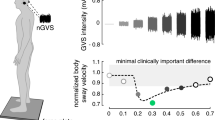Abstract
Auditory neuropathy/spectrum disorder (ANSD), also referred to as auditory neuropathy/dys-synchrony (AN/AD) is a recently described form of hearing impairment. Many studies have shown that changing the pattern of afferent input to the cortex significantly affects cortical organization and there is little studies about cortical neuromaturation and plasticity in children with ANSD. Study of P1 component of cortical auditory evoked potentials (CAEPs) in children with ANSD. This survey was descriptive cross-sectional. During that 97 hearing impairment children were under hearing screening tests. Of these, 14 selected subjects (ear = 28) diagnosed with ANSD (an average age of 8.5 years) and evaluated by P1 component of CAEPs. Based on latency results of p1 wave, the ears of the subjects fell into two seperate groups: Control (normal: n = 10) and case {total: n = 18 (delayed: n = 12) + (absent: n = 6)}. The averages of mean latency of P1 components of the case group in the right and the left ears compared to the control group had significant differences (p < 0.05). Abnormal latency of p1 component in ANSD children shows the possibility of different scales of disturbances in cortical auditory maturation and grow.
Similar content being viewed by others
References
Cardon G, Campbell J, Sharma A (2012) Plasticity in the developing auditory cortex: evidence from children with sensorineural hearing loss and auditory neuropathy spectrum disorder. J Am Acad Audiol 23(6):396–411 (quiz 495)
Bielecki I, Horbulewicz A, Wolan T (2012) Prevalence and risk factors for auditory neuropathy spectrum disorder in a screened newborn population at risk for hearing loss. Int J Pediatr Otorhinolaryngol 76(11):1668–1670
Breneman AI, Gifford RH, Dejong MD (2012) Cochlear implantation in children with auditory neuropathy spectrum disorder: long-term outcomes. J Am Acad Audiol 23(1):5–17
Cardon G, Sharma A (2013) Central auditory maturation and behavioral outcome in children with auditory neuropathy spectrum disorder who use cochlear implants. Int J Audiol 52(9):577–586
Tremblay K, Clinar C (2015) Cortical evoked auditory potentials. In: Katz J, Chasin M, English K, Hood LJ, Tillery KL (eds) Hand book of clinical audiology, vol 18. Lippincott Williams & Wilkins, New York, pp 337–356
Hunter LL, Sanfor CA (2015) Tympanometry and withband acoustic immittance. In: Katz J, Chasin M, English K, Hood LJ, Tillery KL (eds) Hand book of clinical audiology, vol 18. Lippincott Williams & Wilkins, New York, pp 137–164
Hood LJ (2007) Auditory neuropathy and dys-synchrony. In: Burkard RF, Eggermont JJ, Don M (eds) In auditory evoked potentials basic principles and clinical application. Lippincott Williams & Wilkins, Baltimore, pp 275–290
Gold JR, Bajo VM (2014) Insult-induced adaptive plasticity of the auditory system. Front Neurosci 8:110
He S, Grose JH, Teagle HFB, Woodard J, Park LR, Hatch DR, Buchman CA (2013) Gap detection measured with electrically evoked auditory event-related potentials and speech-perception abilities in children with auditory neuropathy spectrum disorder. Ear Hear 34(6):733–744
Carvalho ACM, de Bevilacqua MC, Sameshima K, Costa Filho OA (2011) Auditory neuropathy/auditory dyssynchrony in children with cochlear implants. Braz J Otolaryngol 77(4):481–487
Hassan DM (2011) Perception of temporally modified speech in auditory neuropathy. Int J Audiol 50(1):41–49
Nash-Kille A, Sharma A (2014) Inter-trial coherence as a marker of cortical phase synchrony in children with sensorineural hearing loss and auditory neuropathy spectrum disorder fitted with hearing aids and cochlear implants. Clin Neurophysiol 125:1459–1470
Sharma A, Cardon G, Henion K, Roland P (2011) Cortical maturation and behavioral outcomes in children with auditory neuropathy spectrum disorder. Int J Audiol 50(2):98–106
Michalewski HJ, Starr A, Zeng FG, Dimitrijevic A (2009) N100 cortical potentials accompanying disrupted auditory nerve activity in auditory neuropathy (AN): effects of signal intensity and continuous noise. Clin Neurophysiol 120:1352–1363
Sharma A, Cardon G (2015) Cortical development and neuroplasticity in auditory neuropathy spectrum disorder. Hear Res 330(00):221–232
He S, Teagle HFB, Roush P, Grose JH, Buchman CA (2013) Objective hearing threshold estimation in children with auditory neuropathy spectrum disorder. Laryngoscope 123(11):2859–2861
Huang BY, Roche JP, Buchman CA, Castillo M (2010) Brain stem and inner ear abnormalities in children with auditory neuropathy spectrum disorder and cochlear nerve deficiency. Am J Neuroradiol 31(10):1972–1979
Roush P, Frymark T, Venediktov R, Wang B (2011) Audiologic management of auditory neuropathy spectrum disorder in children: a systematic review of the literature. Am J Audiol 20(2):159–170
Acknowledgements
We would like to thank Hamadan university of medical sciences, all our audiologists and the volunteers for their contribution to this research. Funding was provided by 9410015544.
Author information
Authors and Affiliations
Corresponding author
Ethics declarations
Conflict of interest
The authors declare that they have no conflict of interest.
Rights and permissions
About this article
Cite this article
Emami, S.F., Abdoli, A. Cortical Auditory Evoked Potentials in Children with Auditory Neuropathy/Dys-Synchrony. Indian J Otolaryngol Head Neck Surg 71, 238–242 (2019). https://doi.org/10.1007/s12070-018-1445-x
Received:
Accepted:
Published:
Issue Date:
DOI: https://doi.org/10.1007/s12070-018-1445-x




